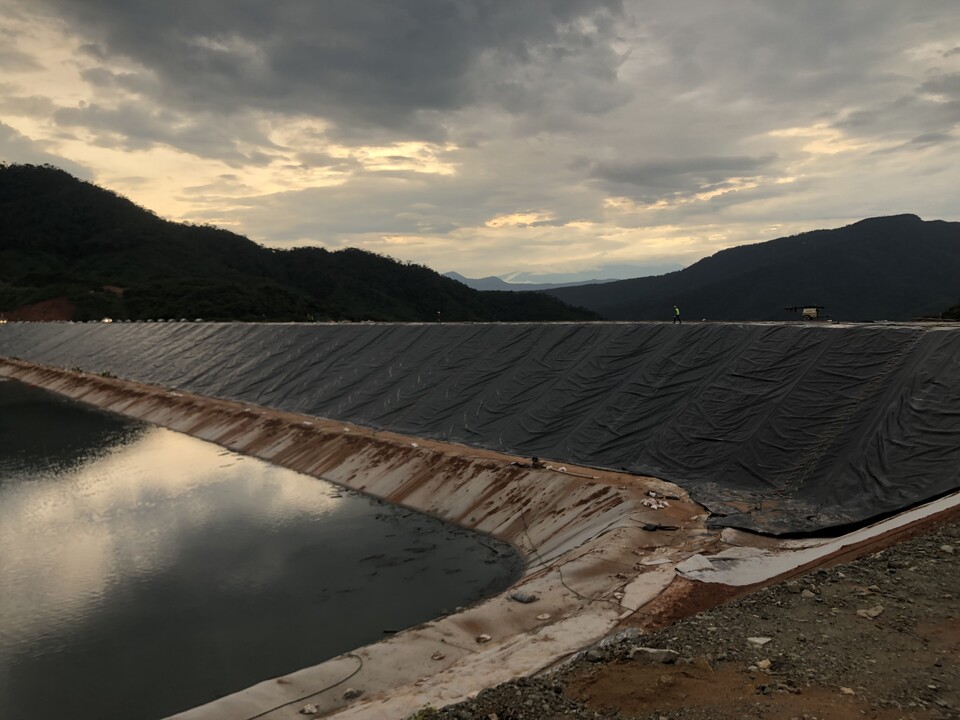
Describe methodological measures for ecological restoration of tailings ponds
With the economic development and development of mineral resources, a large number of tailings are stored in tailings ponds in the process of mineral processing, which is also a major source of danger and pollution from the perspective of environmental protection and safety. In today's increasingly tense land resources, tailings pond service period, how to tailings pond ecological restoration, as well as the secondary use of the land occupied by the tailings pond has become an important goal of concern. In this paper, the method and measures of ecological restoration of tailing ponds are briefly introduced by taking a tailing pond closure project as an example.
I. Closure of tailing pond
Tailings containing many metal elements that are not treated and are directly discharged will pollute the environment and groundwater. Therefore, when the tailings implement the management of closed storage, it is necessary to cover the tailings with pit seepage control, waste residue landfill, and clay layer. The structure of the closure cover system is, in order from the surface to the heap, a vegetation layer, a drainage layer, an impermeable layer, and an exhaust layer.
The impermeable layer is usually regarded as the most important component of the final cover system, HDPE impermeable geomembrane because of its small permeability coefficient, good impermeability performance, far lower than the permeability coefficient of clay, Shi paving a large extent to reduce the construction difficulty, speed up the construction speed. HDPE impermeable geomembrane's tensile performance is better than that of clay, and its maximum tensile deformation index of sensitivity to uneven settlement in the landfill is far less than that of clay. As the main material of the impermeable layer, it reduces the amount of rainwater seeping into the tailings storage pile, and achieves the purpose of reducing the amount of leachate generated; the surrounding area is poured with concrete and masonry drainage ditches, so that the rainwater in the whole landfill is effectively channeled and drained, preventing it from seeping into the ground, and realizing the rainwater and sewage diversion in the landfill. When the reservoir cover system is completed, planting green plants can realize the role of green mines and optimize the ecological environment.
I. Closure steps
1. Tailings storage site organization
(1) The overall ground of the tailing pond can be trimmed by bulldozers on the tailing sand beach surface, so that it slopes to the drainage facilities according to a certain slope, and then compacted by rollers. There should be no right-angle broken surfaces or potholes, and there should be no large stones, bottles, rebar wires, or other items to prevent puncturing the geomembrane.
(2) in the tailing pond around the broken surface 1 meter away from the excavation of 800 * 800mm anchoring ditch, play a role in fixing the geomembrane, to prevent the slope is too large anti-seepage geomembrane from sliding down.
II. Laying geomembrane
(1) the geomembrane will be placed in advance at the top of the slope, to arrange neatly, from the top of the slope to the bottom of the slope paving, so that time and effort, saving labor, and paving speed.
(2) Do not damage the geomembrane in the process of laying geomembrane seepage control, lay flat without wrinkles, correctly select the direction of laying, and reduce the number of cuts to minimize the number of welded seams.
(3) two adjacent geomembranes if there is a d-shaped seam, to stagger welding, so that the membrane body is more solid, to leave the appropriate amount of impermeable membrane deformation, to prevent the membrane from thermal expansion and contraction phenomenon, but also to guard against uneven settlement of the foundation.
(4) strive to lay the welding method, do not lay too much to prevent the wind from blowing the geomembrane. If laying welding fast and welding slow, use sandbags or scrap tires on the pressure.
II. Land reclamation
When the reservoir body is completed after the closure should be timely reclamation, and reclamation thickness should reach agricultural reclamation requirements. Bulldozers can be used to repair the tailing sand beach surface, so that it slopes to the drainage facilities according to a certain slope, and then compacted with a roller, and then covered with tillage soil and compacted with a roller, and then the rest of the tillage soil uniformly covered on the surface, and finally artificial fine leveling.
III. Plant species screening
During the operation of the tailings pond, the original vegetation in the reservoir area is destroyed, and it is a more difficult and long period to restore the vegetation naturally under the fragile ecological conditions of a semi-arid in project area, so it is necessary to screen the suitable pioneer plants as the species of land reclamation to improve the reclaimed land, and at the same time, the pioneer plants can grow in the harsh environment of the newly reclaimed land, with a strong resistance to cold, drought, wind, waterlogging, infertility, salinity, and alkalinity, with fast growth, and can fix the Nitrogen in the atmosphere, easier to sow and plant, higher survival rate. The introduction of pioneer plants can improve the survival environment of plants in the abandoned land of mining areas, and provide the necessary preconditions for the growth of suitable plants and other forests, economic crops, and even crops.
IV. Vegetation restoration
It's suitable for planting trees such as oil pine or small poplar on the surface of the tailing pond, and planting grasses with developed root systems such as barberry and sardonyx under the trees, to reduce the evaporation of soil moisture, ensuring the healthy and vigorous growth of vegetation in the pond, and green the environment.